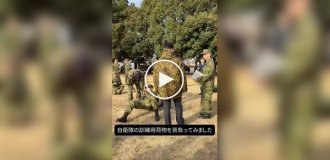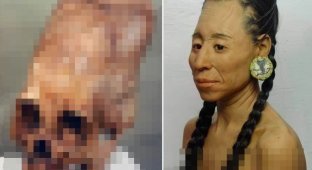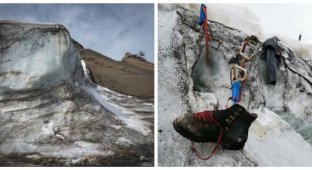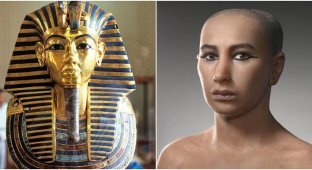Scientists have solved the mystery of the most ancient tattoos in the world (8 photos + 2 videos)
The “Ice Man” Ötzi died 5,300 years ago, pierced by an arrow in the Ötztal Alps at an altitude of 3,200 meters. His mummy was found in 1991. There were 61 tattoos on the mummy's body. Until recently, scientists were not sure how exactly these tattoos were applied... They had to conduct an experiment on a living person. 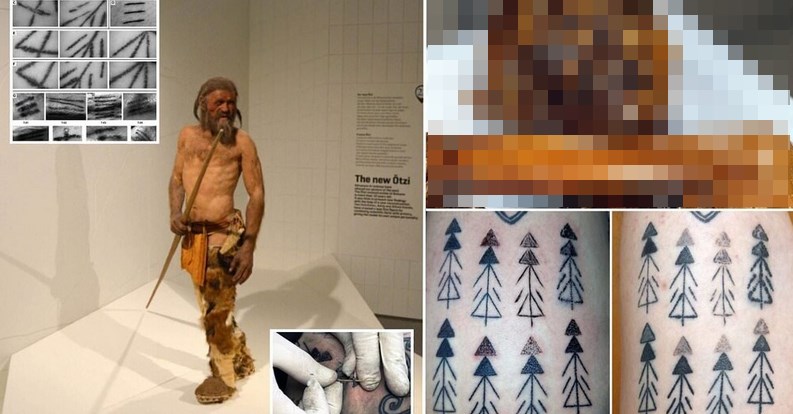
The Iceman Ötzi, Europe's oldest mummy, continues to reveal its secrets.
Even though Ötzi lived between 3350 and 3105 BC, scientists in Tennessee claim to have solved the mystery of his tattoos. 
A 5,300-year-old mummified corpse was found by tourists in 1991 in the Alps at an altitude of 3,210 meters above sea level.
According to them, the tattoos were most likely done by Ötzi himself using a technique known as hand-poking, where the skin is manually pierced with a sharp instrument (a bone or copper needle). 
One expert tattooed himself using several ancient techniques to find out which one resulted in the markings most similar to Iceman tattoos.
Tattoo technique that was used 5,300 years ago
A new study published in the European Journal of Archaeology says Ötzi provides some of the earliest direct evidence of past tattooing.
He had a total of 61 tattoos on his body, consisting of 19 groups of black lines. Despite decades of research, it was still unclear how Iceman tattoos were created and what tools and techniques were used.
It was previously believed that his tattoos were made using an incision technique, which involves first cutting into the skin and then rubbing a plant-based pigment into the incisions. But researchers from the Tennessee Department of Archeology (TDOA) now call this into question, arguing that hand-poking was used in this case. The sharp instrument was dipped in tattoo ink and then pushed into the skin point by point. Archaeologist Aaron Deter-Wolf, one of the authors of the study, spoke about this.
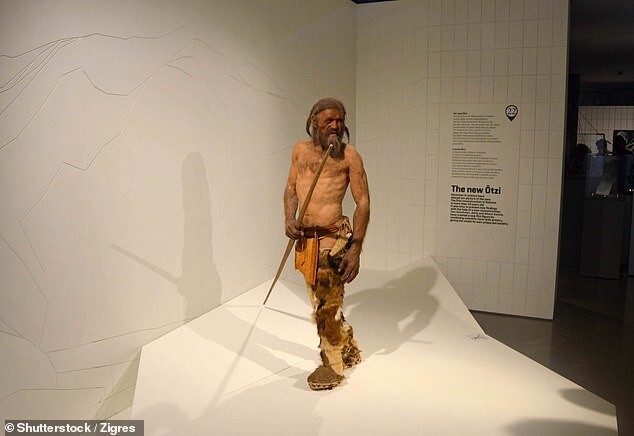
Model of the Iceman Ötzi at the Museum of Archeology of South Tyrol in Bolzano, South Tyrol, Italy
The test subject for the study was tattoo artist Danny Riday from New Zealand. The same designs as Ötzi's were applied to his leg. They were applied using eight different tools and four different techniques. The healing process was then tracked and documented, comparing the end result to mummy tattoos.
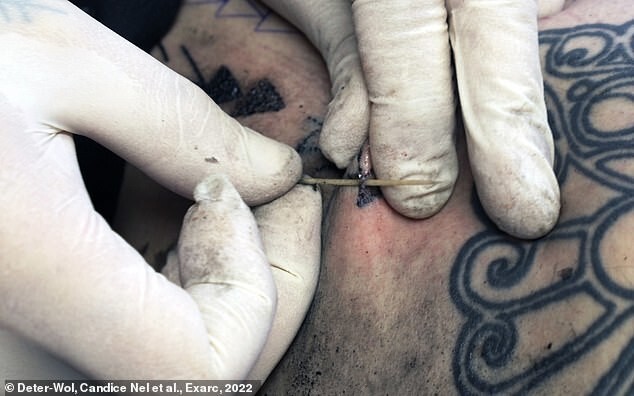
“Every time a tattoo tool pierces the skin, a small wound is created, and all wounds have distinctive characteristics that depend on how they were created,” says Deter-Wolf.
While the scoring technique produces smooth, clean edges from the blade, the hand-poking technique results in tiny overlapping circles or irregular shapes. The researchers concluded that Ötzi's tattoos were made with a bone or copper awl.
Deter-Wolff said similar artifacts had been found in the Ötztal Alps, but had not previously been identified as tattoo tools. The new evidence may prompt archaeologists to reconsider what such tools were used for.
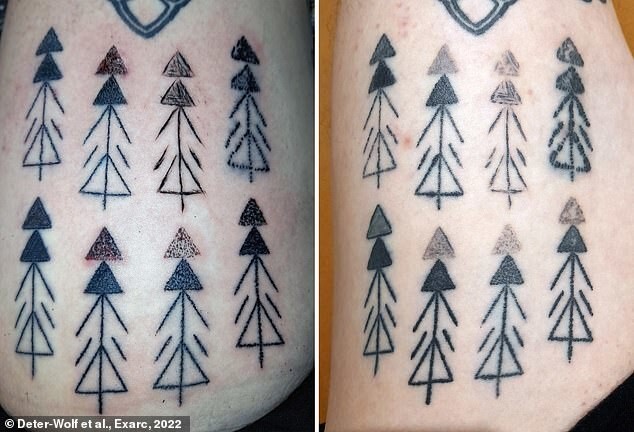
Pictured are the tattoos on Danny Ryday's leg the day they were applied (left) and six months later (right)
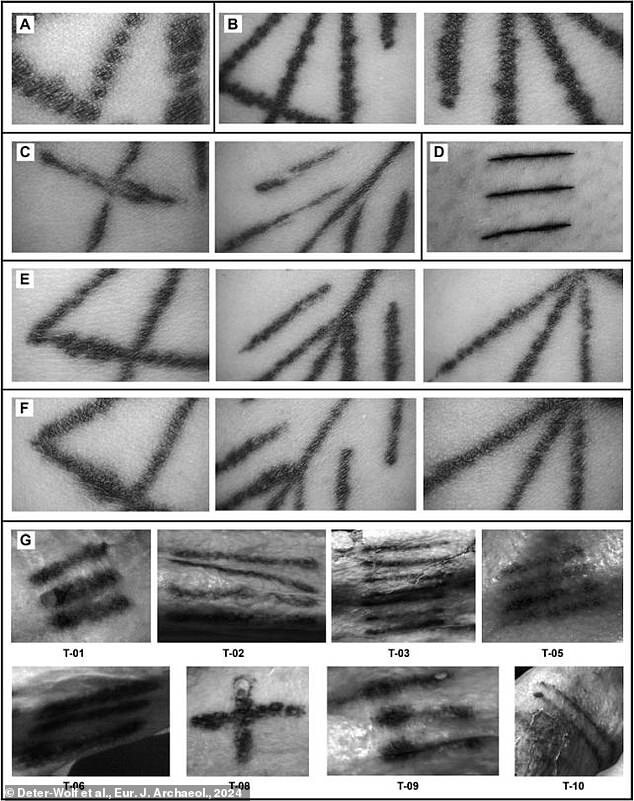
A comparison of the tattoos on Ryday (A-F) with those on Ötzi (G) suggested that the ice man used a hand-poking technique
Last year, another group of scientists announced that Ötzi had dark skin, dark eyes and a balding head. In addition to this, researchers have established that Ötzi was descended from farmers who migrated from Anatolia.
A 2018 examination of the remains showed that the arrow fatally struck Ötzi, severing a nerve in his shoulder and hitting major blood vessels.
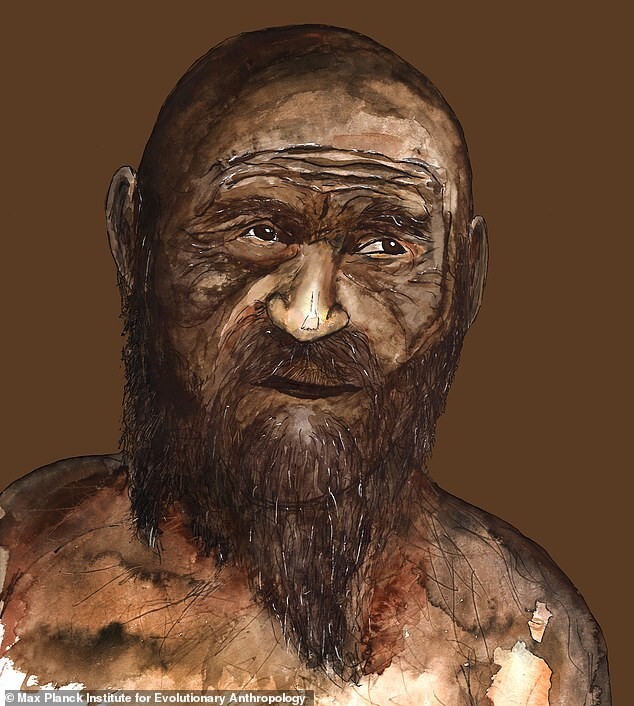
In the photo: the artist depicted what, according to experts, Ötzi looked like during his lifetime
'Iceman' mummy comes to life using 3D printing



